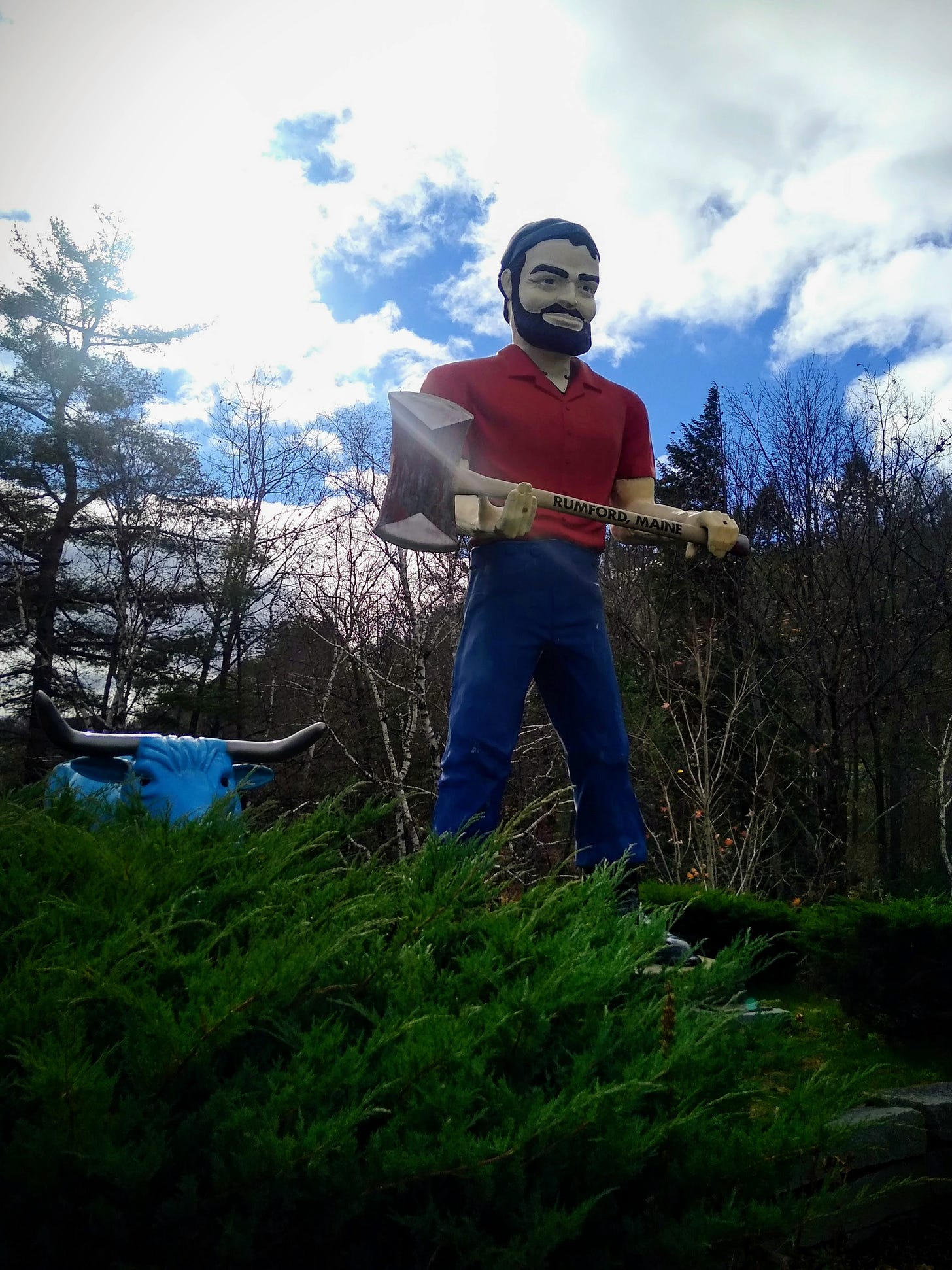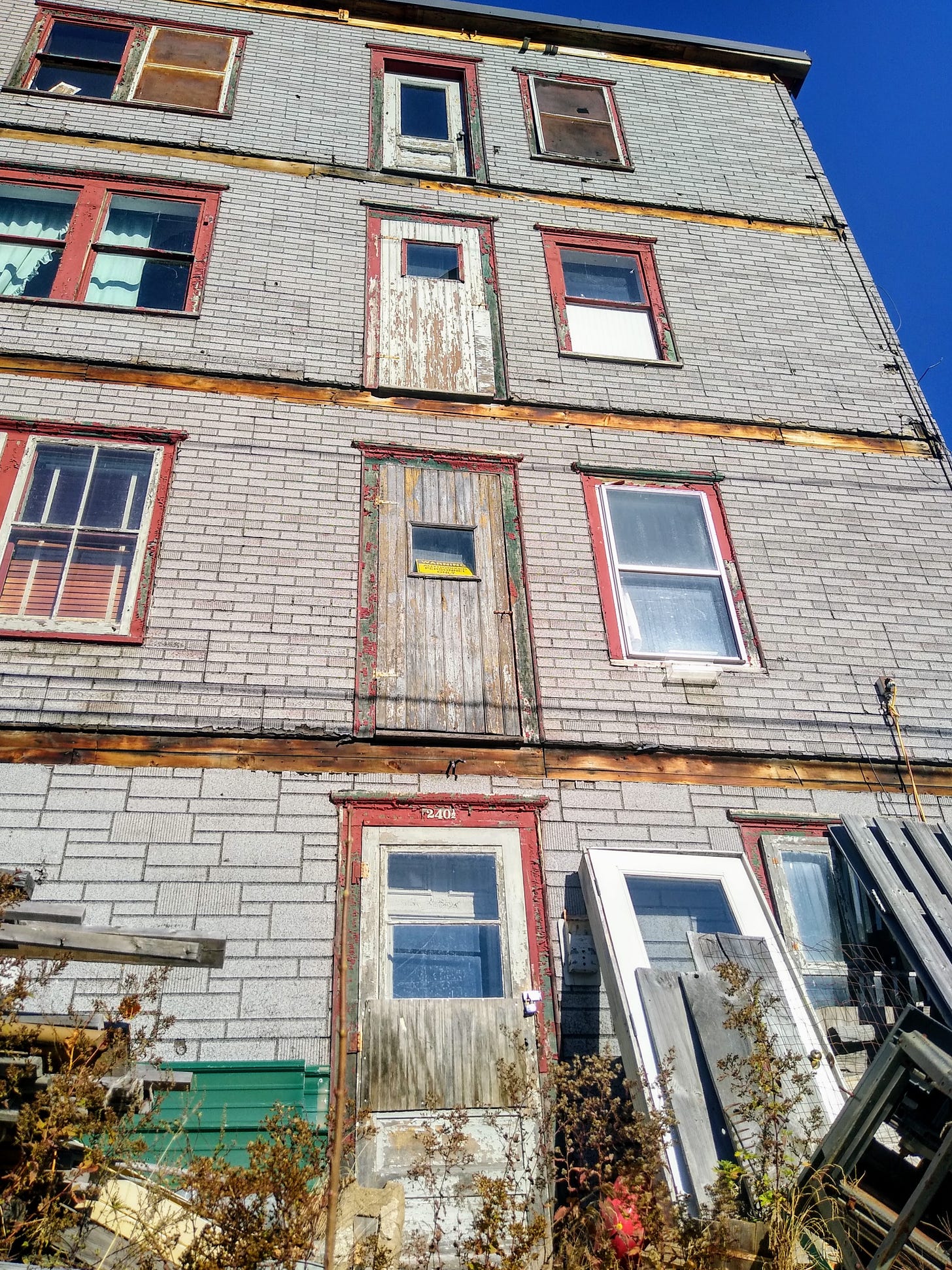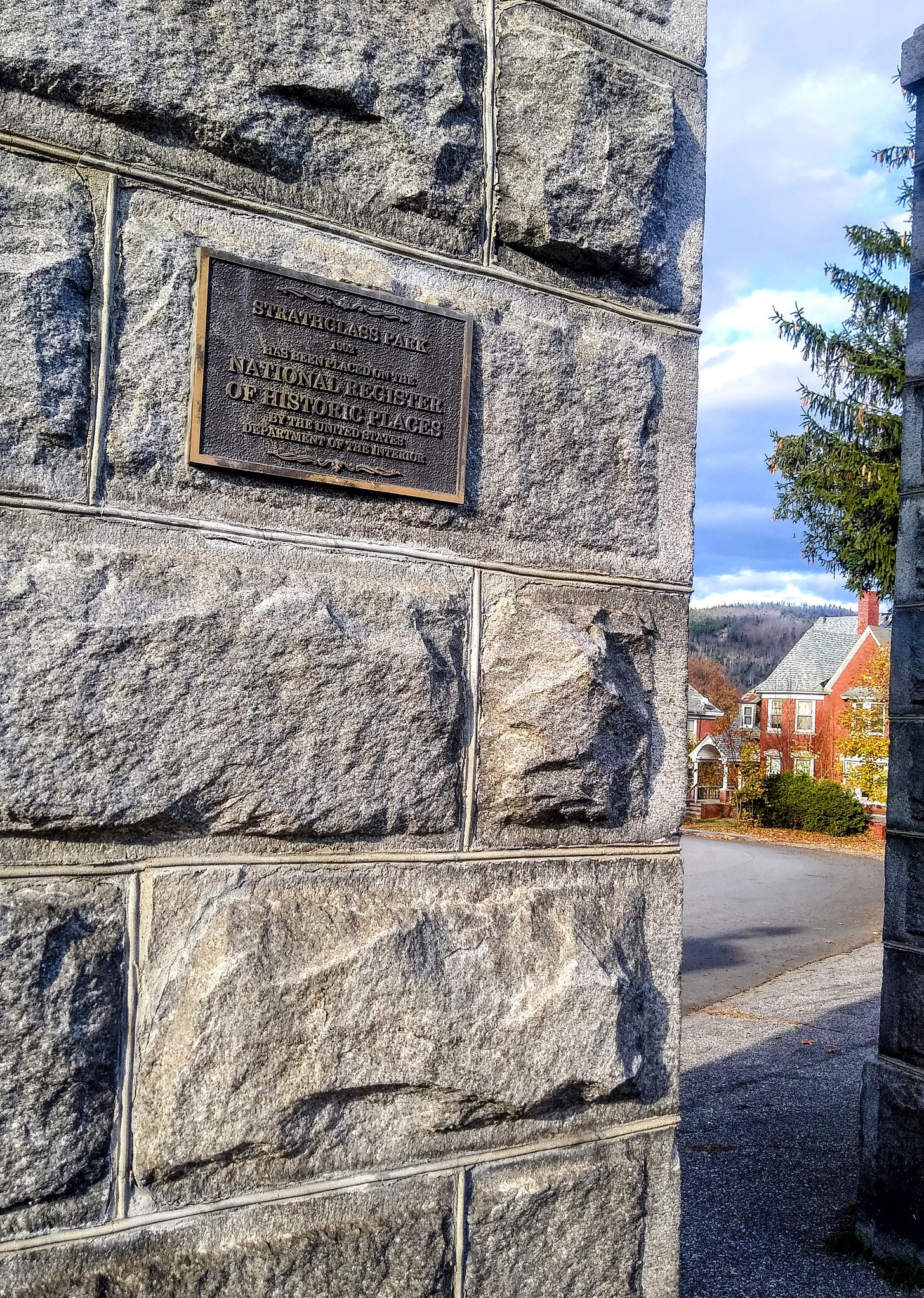A once thriving mill town surrounded by picturesque mountains, a river, and colossal statue of Paul Bunyan, Rumford Maine is filled with the impoverished descendants of mill workers, rundown buildings, and somehow, at the same time, an award-winning housing development.
The crumbling steps leading up to doorways urged caution as I checked off one name after the other, going door to door; the script given to me by my employer proved useless: I imagined the voters would laugh, if I tried to blame their plight on recent politicians, as it’s clear that this has gone on for many years.
An elderly man put it succinctly,
“…you didn’t have to think, you just got a job at the Mill; you didn’t have to save money because there was always the Mill: Well, when the Mill wasn’t as important, and there weren’t as many jobs; and the Mill no longer paid as well: No one knew what to do anymore.”
Many of the residents were slowly pushed from middle-class to lower income, to poverty level; the houses and apartments are falling apart: The Section 8 homes are being condemned; and there are less and less landlords willing to take the vouchers.
The disabled elderly sat in rooms with boxes stacked to the ceiling, waiting to go from houses with floors dissolving, to any place with a roof.
“Please, help me find a place for my old cat,” a woman asks me, “I can’t take her with me.”
My heart broke for her; and she has no interest in the political candidates: The survey remained blank, except for my note at the end, “Primary political issue: Local Housing Crisis.”
There are rumors some of the section 8 landlords were dealing drugs; and I wrote those details down for the candidates; whether they looked into any of it or not, I’ll never know.
Door after door, and block after block, the concerns voiced were not any of the survey options, “We need our small businesses back,” a young couple explains, “They’ve all closed. There are only a couple restaurants in town.”
“I haven’t seen bubbles in the water since the 90’s,” their neighbor, not even on the target voter list, announced, “we’re trying to bring in more tourists, and this isn’t helping.”
“The mill was bought by ND Paper,” a man in his late thirties with two children said, “they demoted me and cut my pay.”
After a week of watching my footing on shaky steps, I turned the corner into the last neighborhood, and stood stunned at a tall stone entrance.
A historic plaque greeted me, “Strathglass Park… National Register of Historic Places.”
The contrast between the beautiful stone and brick houses, and much of the rest of town, was enough to make me stand in confusion for about five minutes: My manager had turned the corner already, completely oblivious to any difference; and I took the opportunity to look up the information on the plaque.
Strathglass Park was built between 1901 and 1902; and a portion of it, is being used as low-income homes; but it hadn’t started that way…
“The neighborhood was conceptualized and funded by Hugh Chisholm. Chisholm, among his many other enterprises, founded the Oxford Paper Company in Rumford in 1882. With the establishment of the mill, Rumford’s population soon swelled and between 1890 and 1900, the town’s population grew by 320%. With this dramatic population boom, the lack of housing for mill workers became a huge problem. Chisholm, realizing this problem and wanting to attract a stable and qualified workforce, designed Strathglass Park to be one of the most luxurious worker housing available.”
Well, I’ll be d*mned.
Why don’t our corporations habitually build nice neighborhoods near their warehouses? Aren’t there tax incentives that could be offered? Couldn’t each state find a way to incentivize this?
How have places like Strathglass Park been in existence for over a hundred years and we refuse to be inspired by them?
I somehow got through the rest of the neighborhood without stumbling in frustration over our culture’s complete disregard of the past.
So much of Modern American History has clashed here, in Rumford Maine, a small, beautiful town, born of industry, and then structurally abandoned: The Mill is now in a Chinese company’s hands: “ND” stands for “Nine Dragons.”
We have much to learn.
It should be noted, one of the days I canvassed Rumford, many of the residents were disproportionately not home: I later discovered an entire block, devoted to cars for a funeral.
I felt impertinent bothering the mourners but have since looked up the dates.
Elliot “Bud” Burns’ impact was so great, even a complete stranger could see it. May his memory, and life of service, inspire us all.
What does the housing crisis look like near you?






